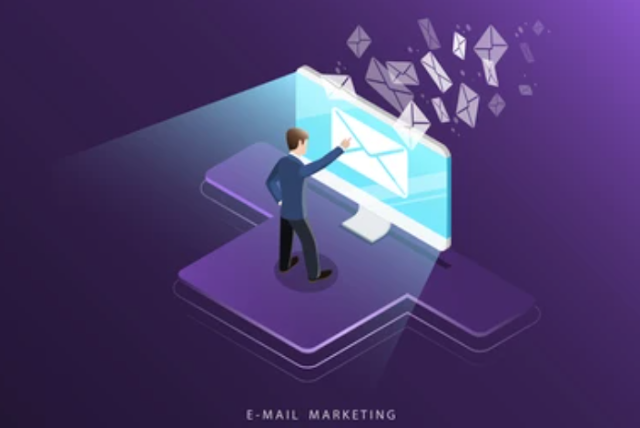Email Marketing Strategies for Successful Online Campaigns
Email marketing remains one of the most effective and powerful tools in the realm of online marketing. By leveraging targeted email campaigns, businesses can connect with their audience, nurture leads, drive conversions, and build long-term customer relationships. In this article, we will explore key email marketing strategies for successful online campaigns.
Build a Quality Email List:
The foundation of a successful email marketing campaign is a quality email list. Focus on organic list building by offering valuable incentives such as exclusive content, discounts, or free resources. Leverage website opt-in forms, social media promotions, and events to gather email addresses from interested individuals. Avoid purchasing email lists to maintain a high-quality and engaged subscriber base.
Segmentation and Personalization:
Segmentation and personalization are essential for targeted and relevant email campaigns. Divide your email list into segments based on demographics, interests, or previous interactions. This allows you to tailor your messages to each group, providing content that resonates with their specific needs and preferences. Personalize emails by addressing recipients by their names and incorporating dynamic content based on their preferences or past purchases.
Compelling Subject Lines and Preheaders:
The subject line and preheader are critical for capturing the attention of your subscribers and increasing email open rates. Craft compelling subject lines that are concise, engaging, and convey the value of opening the email. Experiment with personalization, emojis, or urgency to create a sense of curiosity or exclusivity. The preheader, which appears after the subject line, should provide a preview of the email's content, enticing recipients to open it.
Valuable and Engaging Content:
Deliver valuable and engaging content to keep your subscribers interested and encourage them to take action. Provide educational content, industry insights, tips, or exclusive offers that address your audience's pain points or interests. Use a mix of formats such as blog excerpts, videos, infographics, or downloadable resources to cater to different preferences. Incorporate compelling visuals and clear call-to-action buttons to guide recipients towards desired actions.
Automated Email Workflows:
Implement automated email workflows to nurture leads and guide them through the customer journey. Set up welcome emails for new subscribers, abandoned cart recovery emails, or triggered emails based on specific actions or milestones. Automation ensures timely and relevant communication, reduces manual effort, and helps in building customer relationships at scale. Monitor and optimize workflows based on open rates, click-through rates, and conversion rates.
Mobile Optimization:
With the increasing use of mobile devices, it is crucial to optimize your emails for mobile viewing. Design mobile-responsive email templates that adapt to various screen sizes and ensure content is easily readable on smaller screens. Optimize images and use a clear and concise layout to deliver a seamless mobile experience. Test your emails across different devices and email clients to ensure compatibility.
A/B Testing and Optimization:
A/B testing is a valuable technique to optimize your email marketing campaigns. Experiment with different elements such as subject lines, email designs, calls-to-action, or send times to identify what resonates best with your audience. Split your email list into segments and send variations to each segment, then analyze the results to refine your approach. Continuously test and optimize to improve open rates, click-through rates, and conversion rates.
Clear Call-to-Action (CTA):
Every email should have a clear and compelling call-to-action that guides recipients towards the desired action. Whether it's making a purchase, signing up for a webinar, or downloading a resource, the CTA should stand out and be easy to understand. Use action-oriented language, place the CTA prominently, and ensure it is linked correctly to the designated landing page.
Monitor Metrics and Analyze Results:
Regularly monitor email marketing metrics to evaluate the success of your campaigns. Key metrics to track include open rates, click-through rates, conversion rates, and unsubscribe rates. Analyze the data to gain insights into subscriber behavior, preferences, and campaign performance. Utilize this information to refine your strategies, optimize content, and tailor future campaigns for maximum impact.
Compliance and Respect Subscriber Preferences:
Respect subscriber preferences and comply with email marketing regulations such as GDPR or CAN-SPAM. Provide an option to unsubscribe in every email and promptly honor unsubscribes. Clearly communicate your privacy policy and obtain consent when collecting email addresses. Maintaining a positive reputation by adhering to ethical practices ensures that your emails are well-received and deliver long-term success.
Conclusion:
Email marketing remains a powerful strategy for successful online campaigns. By building a quality email list, segmenting and personalizing content, crafting compelling subject lines, delivering valuable content, implementing automated workflows, optimizing for mobile, A/B testing, using clear CTAs, monitoring metrics, and respecting subscriber preferences, businesses can drive engagement, conversions, and customer loyalty. Embrace these email marketing strategies to create effective online campaigns and unlock the full potential of email as a key component of your digital marketing arsenal.












